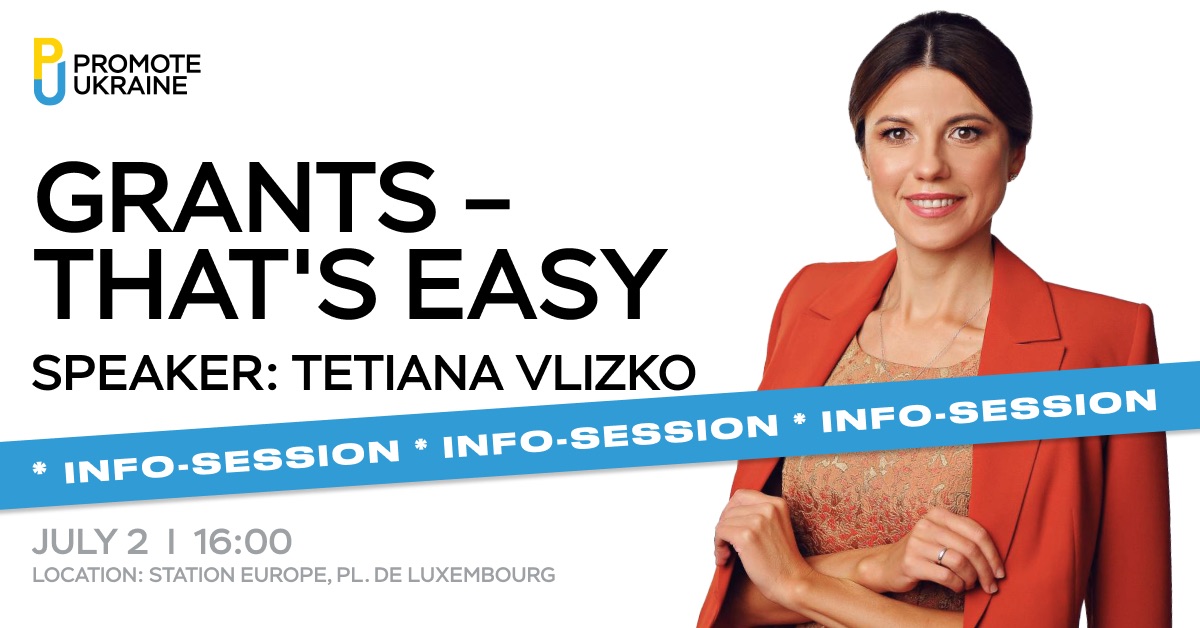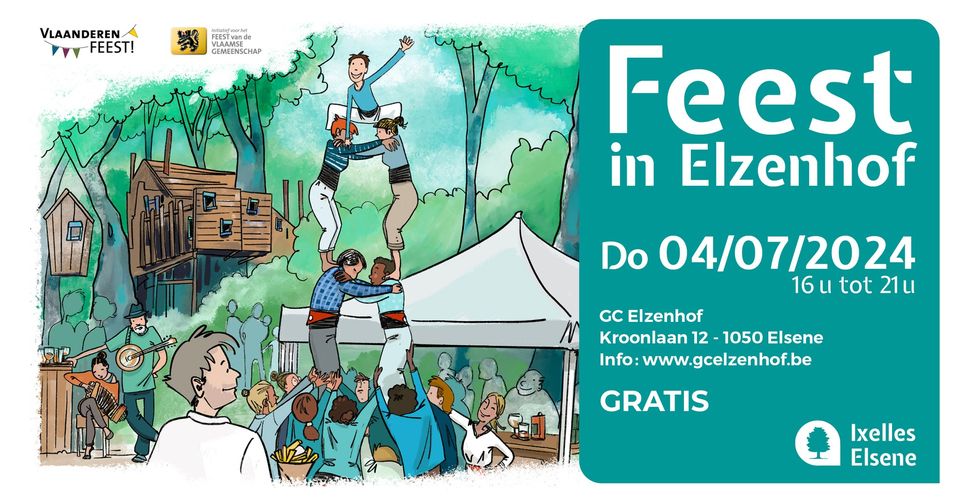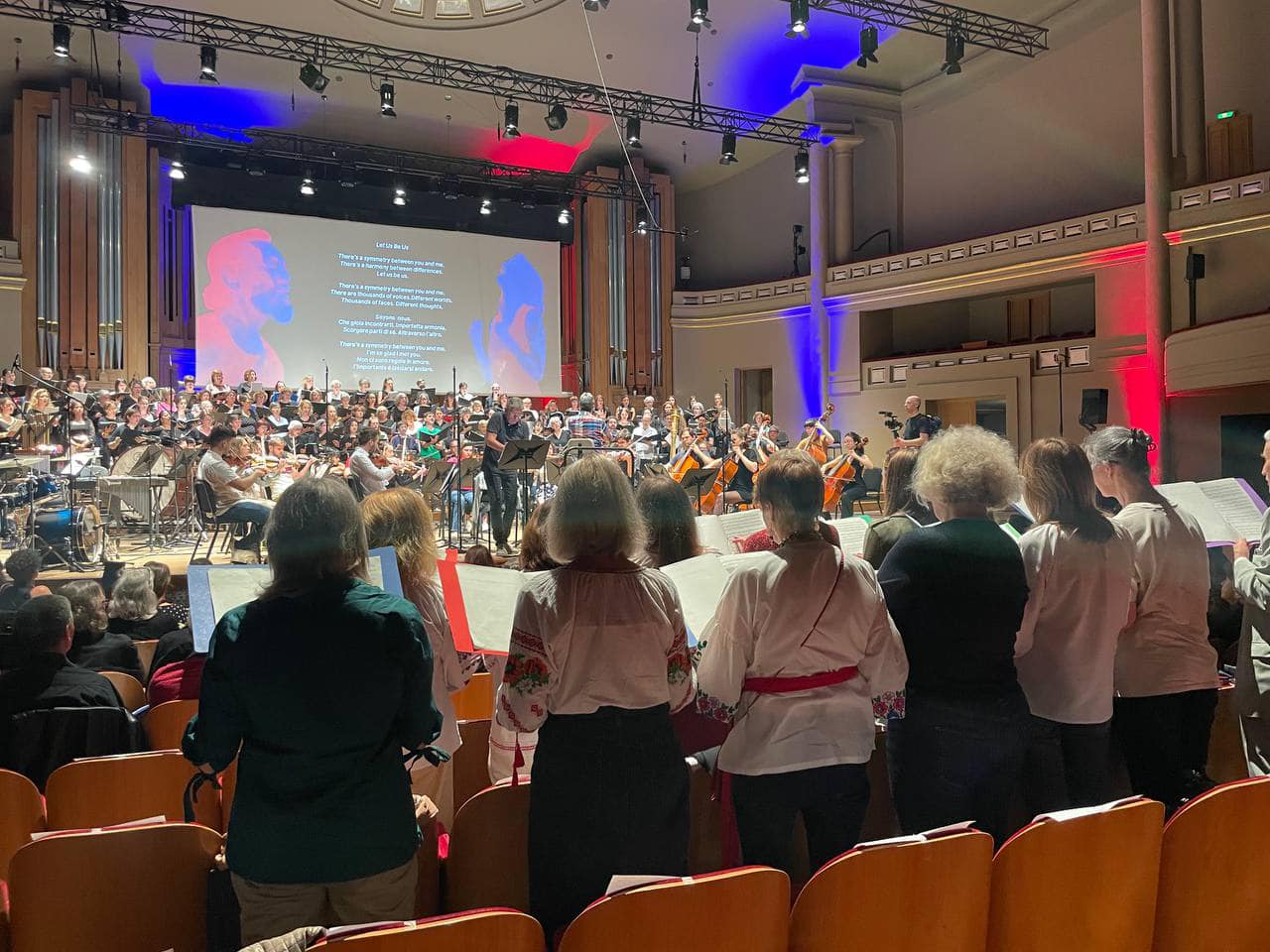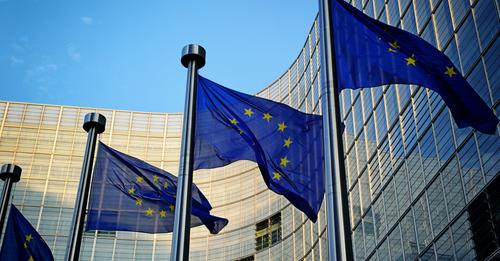The Korsaks’ Museum of Contemporary Ukrainian Art impresses Europeans because it features Ukrainian art at a completely different level.
The museum also impresses Ukrainians, because it shows them their contemporary art – unique, deep, meaningful, and something that makes you think, analyse and change.
Ivanna Malchevska, communication manager at Promote Ukraine spoke with Viktor Korsak, a businessman and founder of the largest Museum of Contemporary Ukrainian Art. In an interview he showcases the philosophy of the museum, its mission, collections, visitors, and plans for the future.
About the museum
 The Korsaks’ Museum of Contemporary Ukrainian Art is the largest museum of contemporary Ukrainian art in Ukraine, founded by the Korsaks family in the Lutsk (Volyn region).
The Korsaks’ Museum of Contemporary Ukrainian Art is the largest museum of contemporary Ukrainian art in Ukraine, founded by the Korsaks family in the Lutsk (Volyn region).
The first phase of the museum totals about 5,000 square meters and contains a number of exhibition halls. The area of permanent exposure occupies 3000 square meters.
The museum features works of more than 100 outstanding artists (more than 800 art objects). A collection of the best works of art of the best Ukrainian artists of the 20th to 21st century have been collected here: paintings, graphics, sculpture, installation, and video art.
How did the idea of creating the Museum of Contemporary Ukrainian Art come about?
Everything in life is stochastically determined. In other words, there is something unknown, unpredictable, random things that give rise to something understandable and predictable. A friend came to me, saw Kumanovsky’s work in my office, which my parents gave me, and said, “I want a painting of this artist!” My father and I went to the artist. He took out 27 works and said: “Take them all.” I had no money, but the artist said, “Give it away in a year.”
Little by little I gave money. The paintings were in our house. I thought it was unfair that no one saw these works. Something had to be done about it.
I already had the Adrenalin City entertainment centre. We increased the area and opened a gallery…
I travel a lot around the world and see that there are museums of modern art in every country, but not in Ukraine. That’s why I decided to do it.
Great! Oksana Zabuzhko said the following words about your museum: “They showed Kyiv up, they showed Pinchuk up.”
We don’t set a goal to show somebody up, we just do our job. Pinchuk has his own direction: he is tuned to the modern world art. And we – to Ukrainian, national. Pinchuk works more in the exhibition format, and our museum has a permanent exhibition. In addition, we have four halls of variable exposures. We have four different exhibitions of four different artists at the same time. This provides dynamics: we open new names and work with different target audiences.
The Korsaks’ Museum of Contemporary Ukrainian Art is a qualitatively new museum, which is not located in Kyiv or Lviv, where a large flow of tourists, and people are basically used to visiting cultural institutions. How does the museum work with a city with a small flow of tourists? How do Lutsk residents feel about the museum?
 Residents of Lutsk are big patriots of the museum! And the city is changing. If you compare the situation three or four years ago, before the opening of the museum, the audience grows, and the museum grows with it. It is noticeable. Earlier people were afraid to even look, and today they visit various exhibitions of different artists.
Residents of Lutsk are big patriots of the museum! And the city is changing. If you compare the situation three or four years ago, before the opening of the museum, the audience grows, and the museum grows with it. It is noticeable. Earlier people were afraid to even look, and today they visit various exhibitions of different artists.
About Kyiv and Lviv, of course, they are larger cities with larger populations. But Bilbao is not in Madrid either (smiles).
Were there any interesting situations with visitors? Maybe they did not always understand the idea of a museum or individual works of modern art?
Yes, of course, it happens very often. If you take our book of reviews, there will be more objections than agreements with contemporary art. There were even cases when people simply pee on the door because they did not accept this art. But we do a lot of inclusive projects. We had people with musculoskeletal disorders: here (in the entertainment center – ed.) and there was the Ukrainian Chess Championship for them. And at first, they protested, objected, and a week later they took part in master classes and painted abstract paintings.
In the mission of the museum, you talk about reflection, and this is exactly the moment. When people do not understand at first, object, and then come to learn more. Please tell us more about the mission and idea of the museum, Why in Lutsk and for Ukrainians?
This is not for Ukrainians, This is a museum for the whole world. Because Ukrainian art is very multi-faceted, interesting, and it is unique! No matter who says that it is interpretations or something else… Our uniqueness lies in the fact that artists have strong roots on the one hand – national traditions, European traditions. On the other hand, this pressure of communism for so many years is all reflected in art, and it is somewhat different, different from the world. And we need to talk about Ukrainian art, tell it, show it.
Many people come to us from Europe, and they are surprised that we have such art. They just don’t see it anywhere in the world! And here you can see it all in one place. Still, we have a sports and entertainment centre here, There are many championships of Ukraine and the world, and there is a flow of visitors from all over Ukraine. In addition, if iconic projects are presented, whole buses come to us from Kyiv and Lviv! That is, the museum acquires national significance.
How many visitors come to the museum on average during the month?
Two and a half thousand a month and about 30,000 visitors a year.
Did the pandemic affect the work of the museum? Are there new formats of work?
We were physically closed all year. But at this time we were doing online projects. For example, the art project “Immunity.” For two months, the artists created works on the topic of biological and spiritual immunity of the nation. After the quarantine, we held an offline meeting, which was attended by 300 artists! 180 of them passed the selection, It was extraordinary! Artists from all over Ukraine came to us, their works… We made an exhibition in the form of DNA: each individual gene is a direction in art.
This year we are doing a similar project – “Your names, Ukraine.” This was also originally online. Everyone painted works for the 30th anniversary of Ukraine’s Independence. On August 24, we held an offline opening. 152 artists took part. We also run a collective monograph on “Your Names, Ukraine” because everyone has their own reflection in addition to their work. That is, it will be the works of artists and their reflections.
Does the city government support your work?
We do not quarrel and cooperate, We do joint projects. Everything is like in a civilised European city – everything is fine… We are now opening another 2,000 square meters of museum space. It will be something impressive! There will be exhibition areas of 1,000…1,200 meters! Not many artists in Ukraine and in the world can master such an area. It will be Ukrainian iconic artists. It will be a very interesting national project!
Great! Speaking of national projects, are artists from the temporarily occupied territories of the Donetsk and Luhansk regions, and Crimea represented in the Museum?
Of course! In our museum, the structure is such that there are halls “Genesis” – a permanent exhibition, which is divided into seven sections: West, Southeast, Kyiv, Odesa, Transcarpathia, Dnipro, Kharkiv. In each section, we have many of the best artists of these regions. There are sculptures by Petro Antyp. He is from Horlivka… The exhibition of Oksana Chepelyk from Luhansk has just ended. We have many artists from this region. We work not only with Kyiv and Lviv, we try to work with the whole of Ukraine. We will have another exhibition from Kharkiv, from Odesa, then from Lviv…
Are there any forbidden topics for the Museum?
It is clear that the topics of popularisation of Nazism, violence against children, that is, all forbidden in the civilised world, are not acceptable, They are outside the culture.
Your job is basically to define something as art. How do you feel about the role of a person who evaluates and decides “yes” or “no”?
It’s difficult. Evaluating is a sin, but it is impossible without it. Art differs from kitsch in that it changes a person. It transforms, causes some conflict. And if it does not cause – then it is no longer art… It is sweet, it is already a topic of conformism… Here you look at the cat, and you have all the emotions that arise in other people, so you join. But when you have a conflict you go to another level of development. Because conflicts take away stereotypes and complexes, purify a person, and then he or she can create something new, think differently.
Is it all about the reflection you set for your mission?
It is.
You remember the protest in Kyiv, which ended with a painted door of the President’s Office. Activists later called it a performance, a creative expression of disagreement with current government policies and actions. These doors open a lot of questions. There is no consensus on whether it was right or not. If these doors were sold as an art exhibit, would your museum buy them for the exhibit?
You’re asking is this door a work of art?
Yes, would the museum recognise them as artwork?
I think it would be a good exhibit. There you can agree or disagree. The only thing I don’t like about this topic is when people are manipulated. This is simple. In fact, the dynamics of social groups are described in textbooks of psychology. Making a herd out of a group of people is very easy in the 21st century. But such artefacts… These doors will still evoke certain emotions people will be interested in. There will be some experiences. That’s right or wrong, but it’s interesting. I think the door would be no worse than a Duchamp’s urinal.
Who are your favourite contemporary artists? Who would you like to see in the museum?
We have a strategy – “Genesis.” There we explore all the art centres and the longevity of the generations in each of them. That is, where did modern art come from. In the hall, you can see Fedir Manailo, how he painted mountains, and then Pavlo Kerestey, who 30 years later painted the same mountains in a different way. These phenomena are interesting for us. Therefore, in accordance with this strategy, we have a list of about 150 authors that we want to bring to complete the collection. Besides, we already have 400… But they are all different! Look at “Odesa. There it is light, the sea; look at “Lviv.” There is an expression, more complicated… In the same way in life, we do both, and that, and that…
I love all Ukrainian art. I don’t like non-art, I don’t like kitsch. I don’t like when people do things just to sell them. They don’t do what their soul tells them or what God has given them, and it comes out, but they do things to please others. I don’t like it, it’s not mine.
Mr. Korsak, if we talk about the entrance cost of the Museum, it is quite symbolic – 40 UAH. And it’s definitely not about “making money” on art, but “giving” people access to art. Please tell us more about the Museum as a social project and how important it is for you.
As for the entrance fee, UAH 40 is really not a lot of money, but we still have, for example, Wednesday, a free day. And people can just come and visit if they want to. On Friday afternoons, too, it’s free entrance, so they don’t go to bars, but come and join the art.
As for such a social mission, in fact, everything is very pragmatic. When you have a house, a car, children have studied, you have met all your physiological needs, the idea arises to do something more, something more interesting…
And I get a lot of pleasure that people change after visiting our museum. It’s much more interesting than a new car…
Were there specific manifestations of visitors’ reflection?
Regular! One professional artist came from Moscow. She and other people have been our friends for a long time. They are waiting for Ukraine to allow, because they want to become Ukrainian citizens… We had an exhibition of Vasyl Bazhay, and this woman comes in and immediately starts crying. This is abstract art… She says how many times she has traveled, she has never seen this happen… She looks at the same picture on the phone – and cries again! And there are many such cases… Such art is not fully researched and is very unpredictable.
How has your life changed since the opening of the Museum?
I used to sleep 6-7 hours, now less (laughs). There are more tasks, but a lot of meetings with artists. They are extremely interesting people! Everyone with their views… It is very interesting to communicate with them on the topic of work. Everyone tells something differently, expresses their thoughts… And such conversations develop me very well.
Who helped you create the concept of the Museum?
I took two suitcases of books and went for two weeks, closed the door, and read the history of Ukrainian art, museum studies. I made five slides, gathered well-known art critics, and showed them a presentation. They agreed. The artist Petro Gulyn helped me very seriously. All his life he dreamed of having a museum of modern art in Ukraine. And he voluntarily, with enthusiasm, called a huge number of artists so that they would be loyal and give their works to the Museum for reasonable money. Petro is one of the key figures in the creation of the Korsaks’ Museum of Contemporary Ukrainian Art. He is my friend. We meet, have discussions.
What are you most proud of during the Museum’s operation?
I’m not interested in one-time things, I’m interested in strategy. I like that we are developing in the direction we planned. Here we study “Genesis,l” we adhere to our mission. We change the past because we bring back forgotten names. On the other hand, we create the future because children come to us. I am convinced that among them are the new Picasso, da Vinci, and everyone else. The system itself, the development itself, the sustainability of this development are great merit for me.
You see, we have young staff. We hire students. We also have experienced art critics, for example, Zoya Navrotska… But these children are obsessed with art and also develop quickly because they communicate with outstanding artists. We are moving in the right direction and regularly do projects that are in line with the strategy. Here we are professionals.
What are your plans for the future, other than the 150 artists you want to see?
We plan to expand “Genesis” by 1,000 square meters, and an additional 1,000 square meters will be for exhibitions. We will also gradually gather the 150 artists we have planned. This is one aspect, such an internal one. Another aspect is international projects. I mean, to show a collection of Ukrainian contemporary art regularly in the world so that people can see what Ukrainian art is. On the other hand, we want to do international project. For example, it would be fantastic to bring here the works of Ukrainian Kazymyr Malevych, Vasyl Kandynsky, who also started in Ukraine … American artist Andy Warhol spoke Ukrainian, he was of Ukrainian origin. His works could also be brought. That is to move somewhere in this direction. Of course, this takes time and money.
Why should people come from abroad and visit your museum?
Because this is the only place where you can see the works of the best Ukrainian artists in a comprehensive and holistic way. Artworks that you will not see anywhere else in the world!
IVANNA MALCHEVSKA, PROJECT MANAGER AT PROMOTE UKRAINE






 UA
UA FR
FR DE
DE




